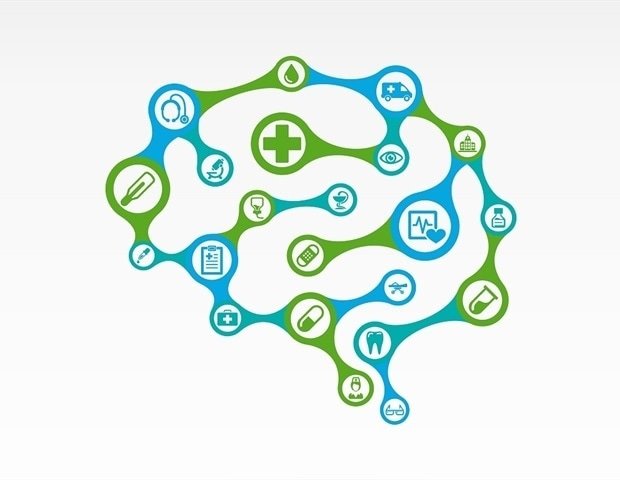Major depressive disorder affects 16.1 million adults in the United States and costs $210 billion annually. While the main symptoms of depression are psychological, scientists and doctors have come to understand that depression is a complex illness with physical effects throughout the body. For example, measuring markers of cellular metabolism has become an important approach to studying mental illness and developing new ways to diagnose, treat, and prevent it.
Researchers at the University of California, San Diego School of Medicine have now advanced this line of work in a new study, revealing a link between cellular metabolism and depression. They found that people with depression and suicidal ideation had detectable compounds in their blood that could help identify people at higher risk of suicide. The researchers also found gender differences in how depression affects cell metabolism.
The findings, published on December 15, 2023 at Translational Psychiatrycould help personalize mental health care and potentially identify new targets for future drugs.
Mental illnesses like depression have effects and drivers far beyond the brain. About ten years ago, it was difficult to study how whole-body chemistry affects our behavior and mental state, but modern technologies like metabolomics help us listen to the conversations of cells in their native language, which is biochemistry.” .
Robert Naviaux, MD, PhD, Professor in the Department of Medicine, Pediatrics and Pathology at UC San Diego School of Medicine
While many people with depression experience improvement with psychotherapy and medication, some people’s depression is treatment-resistant, meaning treatment has little or no impact. Suicidal thoughts are experienced by the majority of patients with treatment-resistant depression, and up to 30% will attempt suicide at least once in their lifetime.
“We are seeing a significant increase in mortality in middle age in the United States, and the increased incidence of suicide is one of many factors driving this trend,” said Naviaux. “Tools that could help us stratify people based on their risk of suicide could help us save lives.”
The researchers analyzed the blood of 99 study participants with treatment-resistant depression and suicidal ideation, as well as an equal number of healthy controls. Among the hundreds of different biochemicals circulating in the blood of these subjects, they found that five could be used as biomarkers to classify patients with treatment-resistant depression and suicidal ideation. However, which five could be used differed between men and women.
“If we have 100 people who are either not depressed or have depression and suicidal ideation, we could correctly identify 85-90 of those at highest risk based on five metabolites in men and another 5 metabolites in women. Naviaux said. “This could be important from a diagnostic standpoint, but it also opens up a broader discussion in the field about what actually drives these metabolic changes.”
While there were clear differences in blood metabolism between men and women, some metabolic markers of suicidal ideation were consistent across both sexes. This included biomarkers for mitochondrial dysfunction, which occurs when the energy-producing structures of our cells malfunction.
“Mitochondria are some of the most important structures in our cells, and alterations of mitochondrial functions occur in many human diseases,” added Naviaux.
Mitochondria produce ATP, the primary energy currency of all cells. ATP is also an important molecule for cell-to-cell communication, and researchers hypothesize that this function is more dysregulated in people with suicidal ideation.
“When ATP is inside the cell, it acts as an energy source, but outside the cell it is a danger signal that activates dozens of protective pathways in response to some environmental stressor,” Naviaux said. “We hypothesize that suicide attempts may actually be part of a larger physiological drive to stop a stress response that has become unbearable at the cellular level.”
Because some of the metabolic deficiencies identified in the study were in compounds that are available as supplements, such as folate and carnitine, the researchers are interested in exploring the possibility of individualizing depression treatment with these compounds to fill in the gaps in metabolism which are required for restoration. Naviaux is quick to add that these supplements are not cures.
“None of these metabolites is a magic bullet that will completely reverse someone’s depression,” Naviaux said. “However, our results tell us that there may be things we can do to nudge metabolism in the right direction to help patients respond better to treatment, and in the context of suicide, that could be enough to to prevent people from exceeding this limit. .”
In addition to suggesting a new approach to personalizing medicine for depression, the research could help scientists discover new drugs that can target mitochondrial dysfunction, which could have broad implications for human health in general.
“Many chronic illnesses are associated with depression because it can be extremely stressful to deal with an illness for years at a time,” Naviaux said. “If we can find ways to treat depression and suicidal ideation at the metabolic level, we may also help improve outcomes for many diseases that lead to depression. Many chronic illnesses, such as post-traumatic stress disorder and chronic fatigue syndrome, are not suicidal thoughts and actions.
Co-authors include: Jane C. Naviaux, Lin Wang, Kefeng Li, Jonathan M. Monk and Sai Sachin Lingampelly at UC San Diego, Lisa A. Pan, Anna Maria Segreti, Kaitlyn Bloom, Jerry Vockley, David N. Finegold and David G. Peters at the University of Pittsburgh School of Medicine and Mark A. Tarnopolsky at McMaster University.
Source:
Journal Reference:
Pan, Los Angeles, et al. (2023). Metabolic features of treatment-resistant major depressive disorder with suicidal ideation. Translational Psychiatry. doi.org/10.1038/s41398-023-02696-9.
